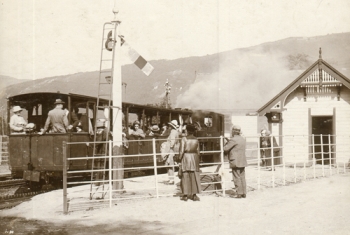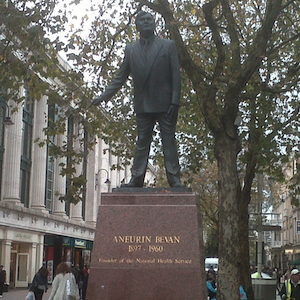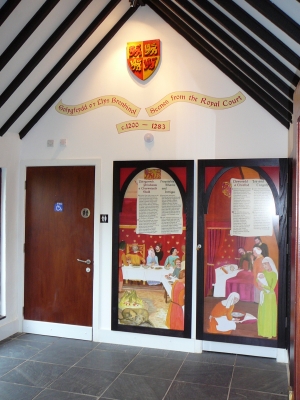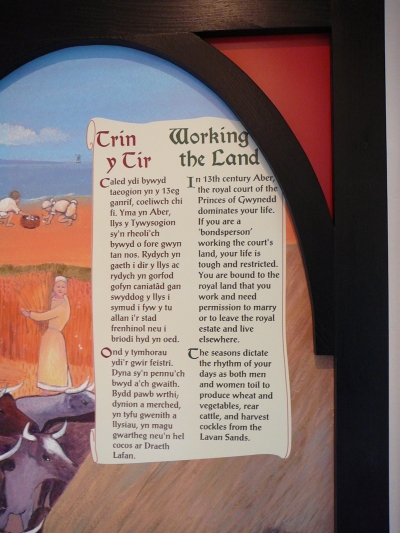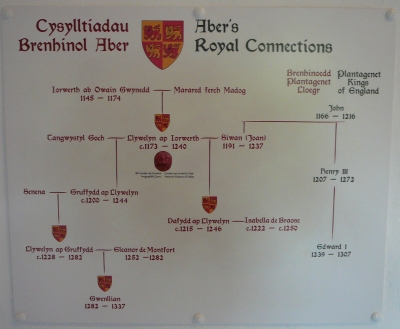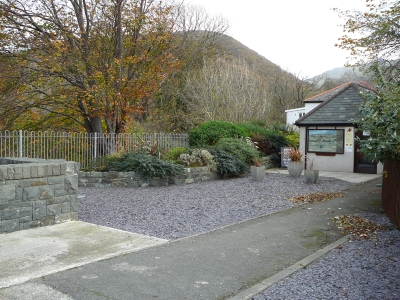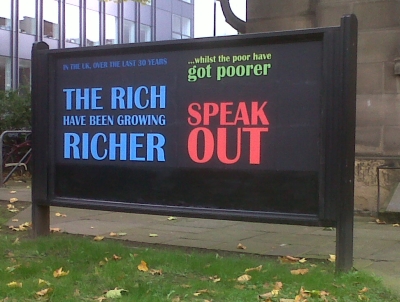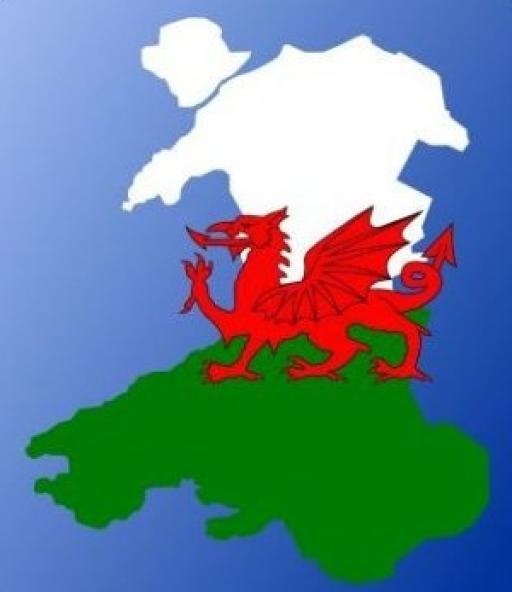
Recently Rated:
Stats
Today, 5 April, is the 117th anniversary of Britain's only rack and pinion railway, the Snowdon Mountain Railway. It was opened purely to serve a tourist market, anxious to visit the highest point in England and Wales without having to go to the trouble of walking or taking a donkey ride to the summit. However, its opening day nearly became the last day of its operation.
The financial benefits to tourism were recognised by the Victorians who didn't miss any opportunity that was presented. With the coming of the railway to Llanberis in 1869, entrepreneurs saw an opportunity to build a railway to the summit of Snowdon, and make a lot of money in the process. Their efforts were frustrated for many years by the local landowner, George Assheton -Smith, who was part of the local dynasty who had extensive property interests, including Dinorwig quarry - the second largest slate quarry in Wales and in the world.Assheton -Smith's very 21 st century NIMBY ('Not In My Back Yard') view was that it would spoil the scenery. One could not imagine the Snowdon National Park giving permission today for such an undertaking!
Originally the railway was intended to leave from Rhyd Ddu on the west side of Snowdon but vested interests in the town of Llanberis realised that a lot of tourism income would be lost if it were to be built there and so the Railway was constructed from the town to the summit over an 18 month period.
TheSnowdon Mountain Railwayis asingle track linewiththree passing loops, narrow gauge (80cm / 2ft 7 in) rack and pinion railway which is 4 miles 1188 yd (7.512km) long, with an average gradient of 1 in 7.86. The steepest gradient is 1 in 5.5, and this occurs in a number of places. The railway rises a total of 3,140 feet, from 353 feet abovesea levelat Llanberis to 3,493 feet at Summit station. A smooth journey on the steep gradients is achieved by a double racked rail used with a rotating toothed pinion. The pinion is mounted underneath the locomotive and guarantees the locomotive does not lose grip on the mountain. The pinion is the only source of traction for the locomotive with the wheels supporting the weight of the engine. Some of the original rolling stock is still in use and, in contrast, three new carriages entered service in 2013.
On the opening day a disaster occurred on the Railway. Two trains climbed safely to the summit. On the first return trip down the mountain, the train with two carriages lost contact with the rack and ran out of control. The locomotive derailed and fell down the mountain. A passenger died from loss of blood after jumping from the carriage. The second downward train hit the carriages of the first, fortunately with no fatalities. An inquiry concluded that the accident had been triggered by post-constructionsettlement, compounded by excess speed due to the weight of the train. Additional safety precautions were put in place on reopening and the Railway has had a perfect safety record since.
Thecafe at the summitof Snowdon, described by the Prince of Wales as"thehighest slum in Wales" was demolished in 2006 to be replaced by a new 8.4m visitor centre three years later. It's slightly bizarre to find a cafe at the top of a mountain but when you've spent three hours walking through drizzle and mist, a hot drink is welcome.
For more information see Snowdon Mountain Railway website
Picture of Llanberis Station Snowdon Mountain Railway
Well, surely one is or one isnt! Its actually far more complicated than that. Being Welsh isnt a simple matter of your parents nationality, the location of your birth, or even where you live at present. Indeed, many nations of the world give the opportunity for citizens of another country to become naturalised citizens of their land and adopt a new nationality - once they go through a considerable number of hoops.
My passport confirms I am a citizen of the United Kingdom of Great Britain and Northern Ireland. As an aside, I have discovered that since 1983 I am no longer a British subject but a British citizen . Concealed in all that complexity is that fact that qualifying people in Wales, England, Scotland and Northern Ireland all have the status of British citizen and there is no mechanism to become a naturalised citizen of just one of those three nations or one province. This is all beginning to get very complicated and I recommend you take five minutes out to watch The United Kingdom Explained . Its a fun piece but beware of some inaccuracies such as Anglesey, the Isle of Wight and the Scottish islands NOT being part of Great Britain and England, Scotland, Wales and Northern Ireland being sovereign nations with their own Parliaments. Ah, that it were so!
Anyway, I digress. This is all about me being Welsh. Was I born in Wales? No, sadly. I entered this world six weeks after the creation of the National Health Service (Architect: Aneurin Bevan a Welshman) so I was free at the point of delivery which was Battle Hospital, Reading. My father? Born in London to English parents (with Irish and French one generation earlier). My mother, however, was born in Cilfynydd, a coal-mining community in the Rhondda Valley, to proud Welsh parents with many generations of North and South Welsh ancestry.
I loved our visits to South Wales as children and our times with our Welsh family and in the 1980s and early 90s I always felt at home when I travelled in Wales in my role of Wales Liaison Manager for the British Tourist Authority. The tipping point came when our elder son Mark moved to Llanberis in 2002. We visited regularly and both fell in love with North Wales and moved here in January 2007.
 I realised almost immediately that for the first time in my life, I felt as if Id truly come home. Some people scoff at the Welsh concept of hiraeth a deep sense of longing for, and connectedness with, the land of Wales to its people and to its history. Hiraeth is probably the most tangible and real explanation I can give for my Welshness as its nothing to do with the more conventional Welsh icons. Its only slightly connected with rugby thats only been the national sport since December 1905 ; it certainly has nothing to do with thick woollen shawls and silly tall hats an invention of Lady Llanover in the 1830s; daffodils only became a Welsh emblem in 1911 courtesy of David Lloyd-George, and the Welsh flag was officially recognised in 1959!
I realised almost immediately that for the first time in my life, I felt as if Id truly come home. Some people scoff at the Welsh concept of hiraeth a deep sense of longing for, and connectedness with, the land of Wales to its people and to its history. Hiraeth is probably the most tangible and real explanation I can give for my Welshness as its nothing to do with the more conventional Welsh icons. Its only slightly connected with rugby thats only been the national sport since December 1905 ; it certainly has nothing to do with thick woollen shawls and silly tall hats an invention of Lady Llanover in the 1830s; daffodils only became a Welsh emblem in 1911 courtesy of David Lloyd-George, and the Welsh flag was officially recognised in 1959!
No, Im a Welshman because I know I am. I cry when I sing Calon L n or Hen Wlad Fy Nhadau . Im profoundly moved when I hear Katherine Jenkins, Bryn Terfel or Cerys Matthews. I am joyously transported 1400 years into Celtic history when I sit in Penmon Priory and think of St Seriol and St Cybi in their daily meeting at Llanerchymedd after a 20 mile walk. I long for their connectedness with God and with the land.
 Its all summed up in a line from our National Anthem (also found on the edge of Welsh 1 coins) - Pleidiol wyf i'm gwlad - True am I to my country.
Its all summed up in a line from our National Anthem (also found on the edge of Welsh 1 coins) - Pleidiol wyf i'm gwlad - True am I to my country.
Dw i 'n Gymro balch.
Watching Ed Milliband dance a ballet of indecision and uttering lightweight response to the Euro crisis and our economy has been excruciatingly painful. Similarly listening to Carwyn Jones political statements in the Welsh Assembly and the press were just like being stoned to death with popcorn. Welsh politicians have all been dancing together, jockeying for advantage and selling their souls to pass the Budget, but always with an eye on public opinion and a reluctance to put their head above the parapet.
Where are Welsh radicals of history like Anaeurin Bevan who single-mindedly fought to establish the National Health Service in July 1948, ensuring my birth seven weeks later was free to my parents at the point of delivery (literally)? Indeed one of his famous quotes could be his verdict on current politicians:
We know what happens to people who stay in the middle of the road. They get run down.
We sadly miss Welsh radicals like David Lloyd George , who for all his deep flaws, was the architect of educational reform and social benefits. He got to the heart of the matter when debating in Parliament on the new idea of unemployment benefit:
You cannot feed the hungry on statistics
Our lightweight, self-serving and ineffective politicians seem to have had every drop of radical blood removed and simple don't or won't recognise the need for radical solutions to the issues faced by today's society. Indeed, they would shy from the dictionary definition of radical:
...a person who advocates fundamental political, economic, and social reforms by direct and often uncompromising methods
My passion for justice has been fuelled by many people who were uncompromising in their quests for reform. People like the great Christian reformers such as William Wilberforce, John Groom, John Newton, Lord Shaftesbury and Elizabeth Fry. Campaigners for equality and social justice like Nelson Mandela and Martin Luther King.
When I grew up, my teenage years were the 1960s and I drank in every drop of news and information about the Civil Rights Movement , the Anti-Vietnam War movement and shaped my musical taste with the protest songs of Pete Seeger , Woodie Guthrie, Joan Baez, Bob Dylan, Phil Ochs, Donovan and others. Thank goodness we still have Billy Bragg today carrying the torch - his unaccompanied singing of the Internationale always has me in tears.
Students were at the vanguard of reform in the 1960's and individuals like Daniel Cohn Bendit and Tariq Ali were young focal points for students and others including me. Today, the Occupy Movement has adopted the view, misguided in my opinion, that everyone is equal and no individual needs to be a leader or spokesman. They need to learn the lessons of history - battles are fought around a leader and a flag. Wider society can then evaluate the arguments in the way they are familiar with.
I've given up on today's politicians. There are young people out there burning with passion, energy and zeal that need to declare themselves, step up to the plate and be the leaders they are and then change Wales, the UK and the wider world for the greater good of the people.
The pages of Americymru became heated last week following an appeal on the site to sign a petition against the siting of an exhibition about the Princes of Gwynedd in a public toilet, which was felt to be disrespectful and demeaning to Welsh history. Some comments were passionate reflecting the deep offence that had been taken; others saw it as an opportunity to make toilet jokes, and others thought it was justified if it meant keeping a public convenience open in these days of cutbacks and closures of such facilities. Because I live only 20 minutes away I decided to visit the site, to take some pictures and let people make their own conclusion when given more information.
I was very impressed with the exhibition, which was located not in the toilet but in an old pump-house (Ty Pwmp) on the edge of the conservation area in Abergwyngregyn village. It was financed by Cadw, Snowdonia National Park, Countryside Commission for Wales, The Welsh Government and others and was formally opened by the local AM Alun Ffred Jones on 11 November. It was located alongside the stream that runs from Aber Falls a couple of miles distant in beautifully landscaped surroundings. The building itself is rather nondescript, but inside it is well-lit and there are beautifully produced and interpreted panels about the Princes of Gwynedd. In one corner of the room there is public toilet cubicle but it is clearly just an amenity in the facility. Any exhibition, museum or gallery contains a public toilet and I think it was mendacious of some of the critics to say this exhibition had been located in a toilet.
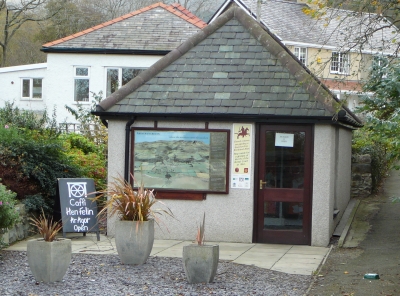 I studied Welsh history at Bangor University and I didn't see anything on the panels that conflicted with what I had been taught. I understand that some scholars take issues with some of the interpretation but this is an exhibition for the general public and does not go into great levels of scholarship. My wife came with me on our visit and she thoroughly enjoyed the exhibition. She would never claim to be knowledgeable about Welsh history but felt she had come away with new knowledge that the Princes had a palace just a short distance from our home.
I studied Welsh history at Bangor University and I didn't see anything on the panels that conflicted with what I had been taught. I understand that some scholars take issues with some of the interpretation but this is an exhibition for the general public and does not go into great levels of scholarship. My wife came with me on our visit and she thoroughly enjoyed the exhibition. She would never claim to be knowledgeable about Welsh history but felt she had come away with new knowledge that the Princes had a palace just a short distance from our home.
One of the great things about living in Gwynedd has been how often one meets interpretive plaques and how much help they are to understanding the area in which we live. I have learned a lot about South Stack, the burial chamber at Bryn Celli Du, the Llys at Newborough, and about the Dinorwig quarry area from the excellent interpretation provided in Parc Padarn. I believe the interpretation in the Ty Pwmp in Abergwngregyn makes a huge contribution to the understanding of the Heritage of the Princes of Gwynedd.
Believing that a picture is worth 1000 words, I append below a series of pictures taken today at the exhibition and Id be very interested to hear what others think.
"Occupy a job"was the terse direct tweet sent to me after I had blogged about my day at Occupy Cardiff . At first, I was furious as I have been in continuous employment since 1965, but once I calmed down I realised this just reflected the fact that the tweeter was making assumptions, but in reality knew nothing about me. And that summarises the problem with the Occupy movement, almost nobody knows much about it or really understands it.
The mantra ' we are the 99 percent ' has resonated with ordinary people throughout the western world. People in western nations are confused and angry as they see their standards of living reduced because of the economic crisis of the last three years. Their anger is directed against a tiny number of people and organisations of wealth and power who continue to increase their prosperity and their influence, whilst ordinary people see the deep reduction in their living standards. However, ordinary people perceive no outlet to express that depth of feeling and so the emergence of the Occupy movement has at last provided them a vehicle to carry their anger and frustration with the 1 percent.
Ironically, the ethos of the Occupy movement is actually quite difficult to get alongside. They state general principles of anger and rejection of the conduct of the bankers who caused economic ruin for many people, the huge multinational companies that pay little or no tax and politicians whose priorities include areas like substantial military spending whilst bringing in austerity measures which have hurt people at the most vulnerable end of society the most. However, they are radical because they don't produce a simple manifesto with a list of demands which ordinary people would find easy to understand and to engage with. As was noted in The Guardian :
To critics of Occupy Wall Street, one of its most glaring weakness is the lack of specific demands. To many supporters, that ambiguity is one of the main foundations of the movement's success.Two goals documents, The Liberty Square Blueprint and The 99 Percent Declaration that have emerged from Occupy Wall Street illustrate the diversity of ideologies of participants. The reason is simply that each expression of the Occupy movement is autonomous, and unlike most of society's structures, is not a hierarchical entity but it represents a group of co-equal individuals, drawn together and united by their shared participation with the 99 percent of society that feels disempowered, disenfranchised and unable to influence the inexorable greedy progress of the 1 percent.
My good friend Steve commented on Facebook,
"If the 'Occupy' movement really does represent the '99 percent' ... it should be no problem for them to accomplish whatever changes they are seeking at the next election opportunity."A great idea Steve, but unfortunately the disparate nature of the movement would never be able to stand on a common platform. I attended the planning meeting for Occupy Bangor group, some of whom made me feel decidedly right-wing! The group contained supporters of the Labour Party, Plaid Cymru, the Greens, anarchists, ordinary Bangor University students and people with no declared political affiliation. I know of church ministers, magistrates and other middle-class people who would not be seen as natural participants, joining the occupation at St Pauls .
Despite the setbacks in Cardiff , in Portland, Oregon and in New York where the police broke up the occupations, there is still a hunger for protest and more and more expressions of the Occupy movement are appearing all over the world. However, this movement will only succeed if it is embraced by a huge proportion of the public at large, something that wont happen until people can find a point to engage. However, the movement has already succeeded by providing a useful platform for others to build upon. Despite St Paul's Cathedral's reluctance to endorse the Occupy movement and Ed Milliband's over-long silence about the issue, St Pauls and Milliband finally found some integrity and made positive statements of support.
My anxiety is that this movement has built-in the seeds of its own destruction by having no appointed leaders, spokespersons or manifesto to communicate their important message. Here in Wales 100 years ago we had our own movement, a religious revival in 1904 which impacted the nation hugely, transforming many lives. In 1904 nobody would have imagined that the movement would have all but run out of steam within two years. I would urge those involved with the Occupy movement which includes me as one of the 99 percent -- to learn the lessons of history and ensure that its aspirations are clearly understood, embraced and fought-for by the remainder of the 99 percent.
 After a 6am alarm, a drive from the shadow of Snowdon to Bangor Station, a four-and-a-half hour train journey, I was finally in Cardiff. My conscience had been troubling me that I was confining my left-wing commitment purely to blogging, so yesterday morning found me joining a hundred or so like-minded people (many 40 years younger than me!) at the foot of a statue to my hero, Aneurin Bevan at the Occupy Cardiff protest.
After a 6am alarm, a drive from the shadow of Snowdon to Bangor Station, a four-and-a-half hour train journey, I was finally in Cardiff. My conscience had been troubling me that I was confining my left-wing commitment purely to blogging, so yesterday morning found me joining a hundred or so like-minded people (many 40 years younger than me!) at the foot of a statue to my hero, Aneurin Bevan at the Occupy Cardiff protest.
Just before we set off I was handed a leaflet, What to do if arrested. Suddenly the reality of what I was doing hit me. I had no plans to break the law but could easily be included with a group less cautious than I am! When we left, I had been hoping we would be greater in number, carrying more banners, but I had my walking boots and waterproofs against the rain that set in at 2pm precisely, and was prepared for a two-hour march. Two minutes after setting-off we had crossed the busy road to Cardiff Castle and we had arrived! Swiftly jumping down from the pavement to the grass alongside the castle, the group set up tents and started its first General Assembly a key component of the Occupy movement which allows anyone to speak.
At that point, the weaknesses of operating an egalitarian group began to show themselves. Hesitation over who was facilitating the Assembly, a loud-hailer which was not up to the task, people not shown how to use the loud-hailer, batteries that were quickly exhausted with no replacement; all leading to disappointment that we couldnt hear what was said. It would have helped to have more banners, some musicians, and some rehearsed chants to make for better engagement of all present. I believe there is a lesson here having leadership, co-ordination and reference to a model that works elsewhere does not detract from the aims of equality for all. My other disappointment was despite a Cymdeithas yr Iaith banner, I heard no Welsh spoken. However, I was glad to see a later Tweet that the protest was the first time the, We are the 99 per-cent slogan had been heard in Welsh.
The police stood round in ridiculously over-the-top numbers looking embarrassed. There were mounted police, ordinary officers, community support officers, police cars, vans and, I suspect, every demonstrator could have been allocated his or her personal officer. Sadly, those officers waded in shortly after I left for my long trek back to North Wales, to remove the fledgling protest and the tents and some arrests were made.
I was energised by the passion and commitment of the participants and will take my experiences back to the nascent Occupy Bangor group. Hopefully, there will be a clear backlash against this attack on peaceful protest and the first Welsh expression of the Occupy movement will re-emerge to declare We are the 99 per-cent.
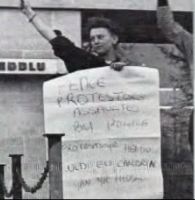 A memorial bench to Helen Thomas, a peace campaigner killed while taking part in the Greenham Common Womens Peace Protest, has been unveiled in the centre of Newcastle Emlyn by the town clock. Helen was born and went to school in Newcastle Emlyn and her family still have a business there. Aged only 22, Helen died after being struck by a police vehicle in 1989. Folk singer Dafydd Iwan wrote a song about Helen, Cn i Helen and took part in the ceremony honouring Helen where Mayor Hazel Evans said the town council honoured her memory and her commitment to peace and her fight against nuclear weapons.
A memorial bench to Helen Thomas, a peace campaigner killed while taking part in the Greenham Common Womens Peace Protest, has been unveiled in the centre of Newcastle Emlyn by the town clock. Helen was born and went to school in Newcastle Emlyn and her family still have a business there. Aged only 22, Helen died after being struck by a police vehicle in 1989. Folk singer Dafydd Iwan wrote a song about Helen, Cn i Helen and took part in the ceremony honouring Helen where Mayor Hazel Evans said the town council honoured her memory and her commitment to peace and her fight against nuclear weapons.
The Occupy movement has filled our media who struggle to understand the nature of protest which is not accompanied by a list of demands. Thirty years ago Wales kicked off another protest which lasted for 19 years. The Greenham Common Peace Camp, where Helen Thomas sadly lost her life, was started in September 1981 by a Welsh group, Women for Life on Earth, who travelled to RAF Greenham Common in Berkshire to protest against the decision of the British government to allow Cruise missiles (nuclear weapons) to be sited there. The Women for Life on Earth group walked 120 miles from Cardiff to Greenham Common and on reaching their destination they chained themselves to the perimeter fence. They were joined by women from across the UK and during the height of the protests, thousands of women blocked the entrances to the base, cut through perimeter fences and formed human chains around the site.
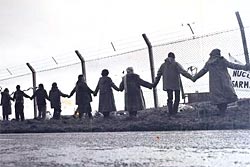 There were some huge demonstrations during the tenure of the Peace Camp. In December 1982, 30,000 women joined hands around the base at the Embrace the Base event. On 1 April 1983, some 70,000 protesters formed a 14 mile human chain from Greenham to Aldermaston and the ordnance factory at Burghfield. Another encircling of the base occurred in Dec 1983, with 50,000 women attending. Sections of the fence were cut and there were hundreds of arrests.
There were some huge demonstrations during the tenure of the Peace Camp. In December 1982, 30,000 women joined hands around the base at the Embrace the Base event. On 1 April 1983, some 70,000 protesters formed a 14 mile human chain from Greenham to Aldermaston and the ordnance factory at Burghfield. Another encircling of the base occurred in Dec 1983, with 50,000 women attending. Sections of the fence were cut and there were hundreds of arrests.
The women were ultimately successful as the Cruise missiles were removed in March 1991. The airbase was closed in 1993 but the peace camp remained until 2000. The attention they received prompted the creation of other peace camps at more than a dozen sites in Britain and elsewhere in Europe so the Occupy movement is not breaking new ground. There are two clear lessons for Occupy from the Greenham Peace Camp.
- You have to be prepared to be there for the long haul
- Despite all the Police, the Media, the Courts and Local Authorities throw at you peaceful protest is the way to succeed
 Occupy is beginning to succeed. It has caused the St Pauls authorities to (finally) take a principled stand and Ed Milliband to (finally) come off the fence. Thoughtful people are starting to think the issues through and Im optimistic that the most powerful force for change, public opinion, will gradually start to bring about the changes our society needs.
Occupy is beginning to succeed. It has caused the St Pauls authorities to (finally) take a principled stand and Ed Milliband to (finally) come off the fence. Thoughtful people are starting to think the issues through and Im optimistic that the most powerful force for change, public opinion, will gradually start to bring about the changes our society needs.
It was heartening to see the warm welcome to the Wales rugby team as they returned home, having acquitted themselves brilliantly in the Rugby World Cup with a fourth place success. That's not bad for a country whose population places it at about number 140 out of 225 countries of the world. However, it seems its only during the 80 minutes of an international rugby match Wales becomes one nation proud, united and bursting with patriotism.
Unfortunately, at other times the events of history have caused Wales to be a nation lacking in self-confidence. Historians point to conquest by the Normans, Edward Ists bloody campaign and the various Acts passed between 1535 and 1542 which made in Wales part of England - at least, in law. This sense of oppression and being downtrodden has sadly been embraced by many Welshmen throughout subsequent years. This resentment was reinforced by educators who forbade use of the Welsh language in schools by means of the notorious "Welsh not" token where any child heard speaking Welsh at school was made to wear the token around their neck, passing it on to another offender if caught, and the last child at the end of the day was caned. However, it was never official government policy.
I grew up with my Welsh valleys mam-gu (grandmother) furious if ever Winston Churchill's name was mentioned in the house because he was said to have sent the troops in against the South Wales miners in Tonypandy. The reality was actually somewhat different but the point was that this was seen as yet another example of the Welsh being treated badly by the English.
For 150 years the mines and quarries of Wales North and South supplied the United Kingdom, the Empire and the World with iron, steel, coal and slate to drive the Industrial Revolution. Sadly, the vast wealth that these valuable resources created was not enjoyed by the miners, ironworkers and quarrymen that paid a terrible price in poor wages and working conditions with many paying the ultimate price in the many industrial accidents or cruel, lingering deaths through occupational diseases like pneumoconiosis or silicosis. This became yet another brick in the wall built by Welshmen of examples of oppression and was duly embraced.
 Where I live in the mountains of Snowdonia, we are rich with a great history of castles and yet I was amazed that none of my Welsh friends would dream of going into magnificent castles like Caernarfon or Conwy because of the association with Edward I and English oppression. More up-to-date is the fact that most people living in the nearby town of Bethesda would not dream of going anywhere near Penrhyn Castle, because that was the home of the local Penrhyn Quarry owner who locked out the quarrymen for two years at the start of the 20th century.
Where I live in the mountains of Snowdonia, we are rich with a great history of castles and yet I was amazed that none of my Welsh friends would dream of going into magnificent castles like Caernarfon or Conwy because of the association with Edward I and English oppression. More up-to-date is the fact that most people living in the nearby town of Bethesda would not dream of going anywhere near Penrhyn Castle, because that was the home of the local Penrhyn Quarry owner who locked out the quarrymen for two years at the start of the 20th century.
I am happy to say that I am a Welshman without this cultural baggage and was drawn by hiraeth to come and live back in my beloved Wales. I accept the relationship between Wales and England would not be used as a model for contentment between nations, but I believe a major shift of culture is needed.
Wales is a country where we have magnificent cultural heritage, Europe's oldest language still flourishing, choirs and a musical tradition unsurpassed in the world. We have stunningly beautiful mountains, rivers, valleys and landscapes. We have more wonderful castles than you could shake a stick at, heritage railways that bring pleasure to every child and grown-up child smelling the steam and oil. We have given the world much-loved actors, politicians like Nye Bevan who gave us the NHS, world famous singers and pop groups. We have our own language which is slowly growing after long decline. We have our own Welsh Government which, for all its flaws, is becoming distinctive and confident. If we were to embrace all that we have as proud Welsh men and women, then the move for Welsh independence would simply disappear as Wales adopted its rightful place as a nation in a Union of nations, co-equal, co-valued and the envy of the world.
So Welsh men and women throw off those chains of oppression and being downtrodden. They dont exist any longer. Despite everyone and everything: we're still here - Er gwaethaf pawb a phopeth: dyn ni yma o hyd!

